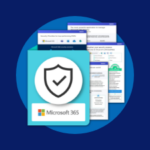Use RDP Client to Connect to a Different Port
- Blog
- Networking
- Post
When working with Terminal Server or RDP you have the choice to change the XP RDP 5.1 or 5.2 client connecting port.
For the “old” Windows 2000 Terminal Server client port changes see Use Terminal Server Client to Connect to a Different Port.
If you’ve changed the listening port on the TS from its’ default – 3389 (Change Terminal Server Listening Port)- you’ll also need to configure your client to connect to the new port. Changing the connection port on the RDP clients is quite easy.
To Alter the Port on the client side:
- Go to the Start menu and click on Run.
- On the Run menu type MSTSC and click Enter.
- In the RDP window, in the Computer box, scroll to the computer name or IP to which you wish to connect.
- Add a “:Port” (without the quotes) where “Port” is the decimal value of the destination port.
- Press Connect.
Another method of connecting to a different port that default is to run the MSTSC command with the required command line parameters:
/v:ServerName[:Port]
For example:
MSTSC /v:192.168.0.150:3390
Note: To use RDP on computers with operating systems other than Windows XP/2003 you will first need to install the RDP client (Download RDP 5.2).
Related articles
You might also want to read the following related articles:
- Add a new RDP Listening Port to Terminal Server
- Change Terminal Server Listening Port
- Download RDP 5.2
- Download Remote Desktop Web Connection for XP SP1
- Enable Remote Desktop on Windows Server 2003
- Install Remote Desktop Web Connection on Windows XP
- Install Remote Desktop Web Connection on Windows Server 2003
- Offer Remote Assistance in Windows XP/2003
- Quickly Connect to Remote Computers
- Remotely Enable Remote Desktop on Windows Server 2003
- Securing RDP/Terminal Services Communications
- Use Terminal Server Client to Connect to a Different Port
- What’s Remote Desktop in Windows XP/2003?
- What’s Remote Assistance in Windows XP/2003?
- How to Fix the “Remote Desktop Connection: An Internal Error Has Occurred” Error



